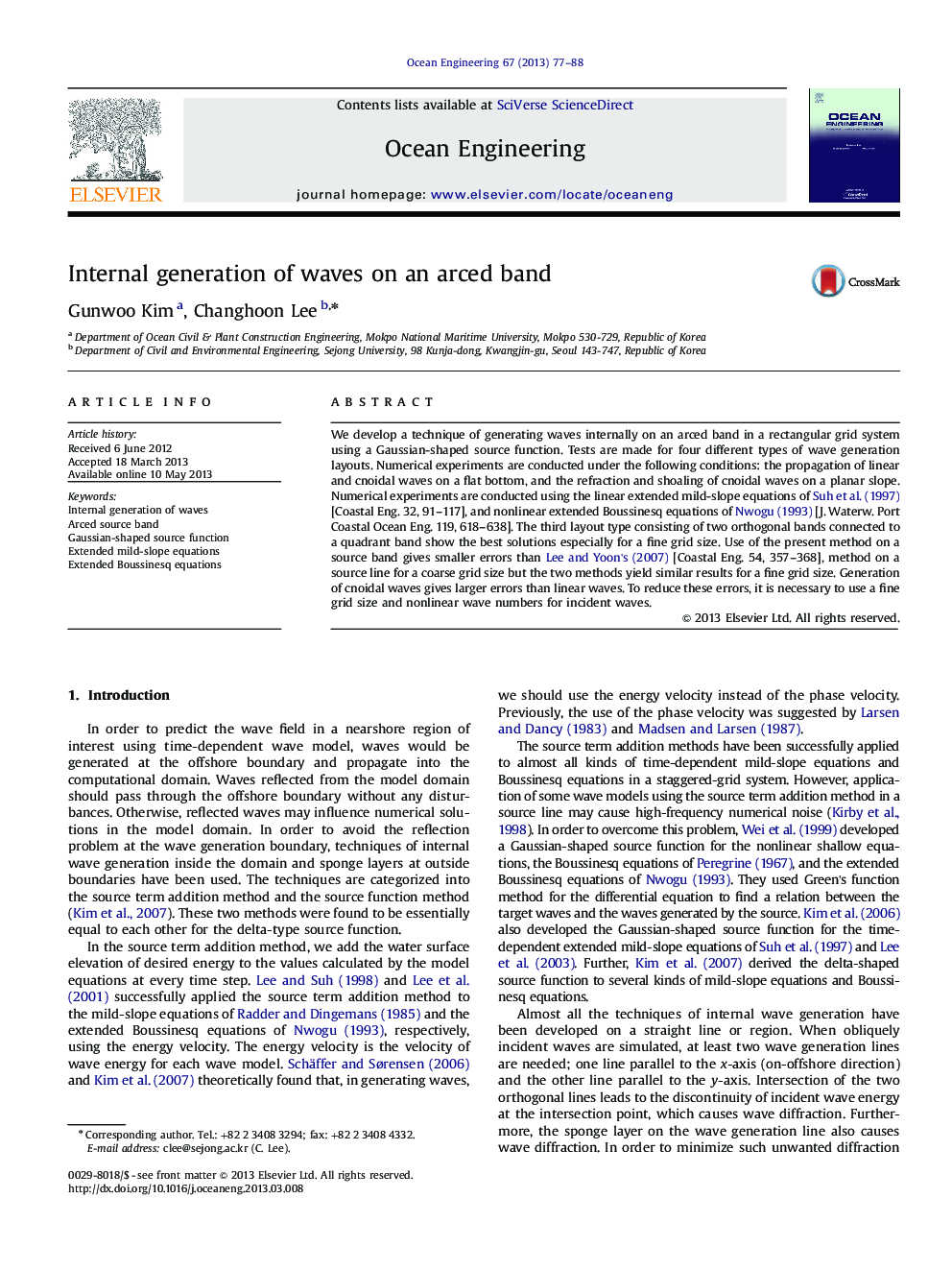| Article ID | Journal | Published Year | Pages | File Type |
|---|---|---|---|---|
| 1725930 | Ocean Engineering | 2013 | 12 Pages |
•We generate waves internally on an arced band.•The present method gives smaller errors than Lee and Yoon's method using a source line.•The layout with 2 orthogonal bands connected to a quadrant band shows best solution.•Generation of cnoidal waves gives larger errors than linear waves.•To reduce these errors, it is needed to use a fine grid size and nonlinear wave number.
We develop a technique of generating waves internally on an arced band in a rectangular grid system using a Gaussian-shaped source function. Tests are made for four different types of wave generation layouts. Numerical experiments are conducted under the following conditions: the propagation of linear and cnoidal waves on a flat bottom, and the refraction and shoaling of cnoidal waves on a planar slope. Numerical experiments are conducted using the linear extended mild-slope equations of Suh et al. (1997) [Coastal Eng. 32, 91–117], and nonlinear extended Boussinesq equations of Nwogu (1993) [J. Waterw. Port Coastal Ocean Eng. 119, 618–638]. The third layout type consisting of two orthogonal bands connected to a quadrant band show the best solutions especially for a fine grid size. Use of the present method on a source band gives smaller errors than Lee and Yoon's (2007) [Coastal Eng. 54, 357–368], method on a source line for a coarse grid size but the two methods yield similar results for a fine grid size. Generation of cnoidal waves gives larger errors than linear waves. To reduce these errors, it is necessary to use a fine grid size and nonlinear wave numbers for incident waves.
